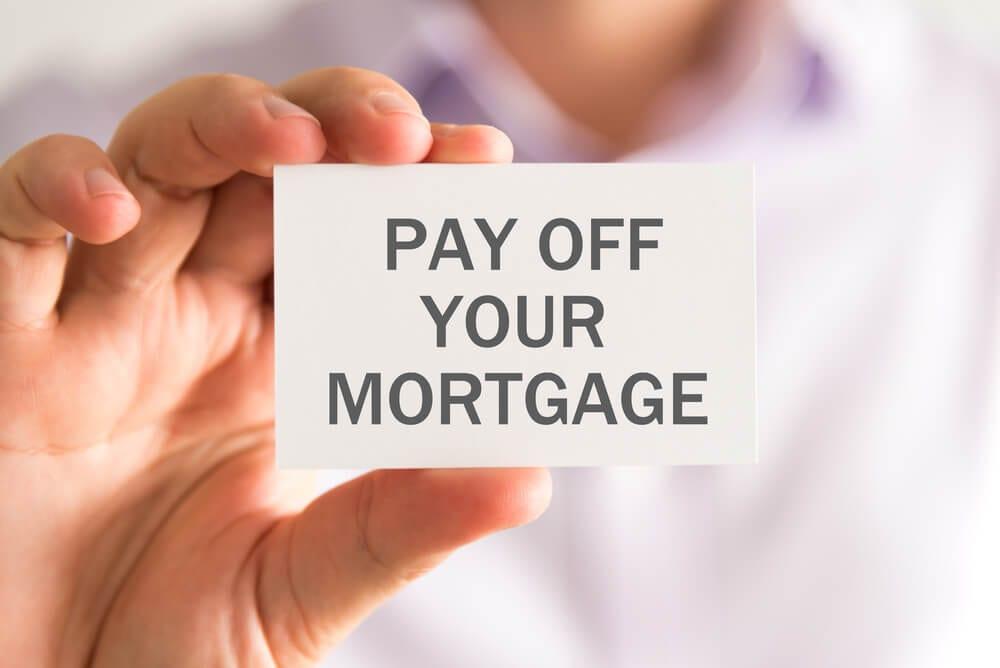Are you tired of the thought of being burdened with a 30-year mortgage? The idea of paying off your home over such a long time can be daunting. But what if we told you that it’s possible to pay off your 30-year mortgage in just ten years? Yes, you read that right! In this blog post, we’ll explore the different types of mortgages available and provide tips on how to prepare for and repay your mortgage early. So buckle up and get ready to learn how to say goodbye to decades-long debt. And hey, if you’re interested in off-plan properties in Abu Dhabi,
The Different Types of Mortgages
When it comes to mortgages, there is no one-size-fits-all approach. The type of mortgage you choose will depend on your financial situation and personal preferences. Here are some of the most common types of mortgages:
Fixed-Rate Mortgage: This is the most popular type of mortgage. With a fixed-rate mortgage, your interest rate remains the same for the entire loan period.
Adjustable-Rate Mortgage (ARM): An ARM has an interest rate that fluctuates periodically based on market conditions.
FHA Loans: Backed by the Federal Housing Administration, FHA loans have less strict requirements than conventional loans and are designed for individuals with lower credit scores or smaller down payments.
VA Loans: Available to veterans and their families, VA loans offer low-interest rates and require no down payment.
Interest-Only Mortgages: As the name suggests, this type of mortgage allows borrowers to pay only interest for a certain period before beginning principal repayments.
It’s important to carefully consider all options before making a decision about which mortgage type is right for you. Work with a trusted lender or financial advisor who can help guide you in choosing what suits your needs best.
The Cost of a 30 Year Mortgage
When it comes to purchasing a home, many people opt for a 30 year mortgage due to its lower monthly payments compared to shorter term mortgages. However, the cost of a 30 year mortgage extends far beyond just the monthly payment.
Firstly, with a longer term, you will end up paying significantly more in interest over the life of the loan. This is because your interest rate is spread out across a much longer period of time. For example, on a $200,000 loan at an interest rate of 4%, you would end up paying nearly $144,000 in interest alone over thirty years.
Additionally, since your loan term is so long, your home may depreciate or lose value during that period. If this happens and you need or want to sell before paying off your mortgage entirely, you may not receive enough money from the sale to cover what’s left on your outstanding balance.
If unexpected financial hardships arise such as job loss or medical expenses causing missed payments and foreclosure proceedings can be costly both financially and emotionally. While it can be tempting to choose the lowest monthly payment option available when buying a home; take all factors into account before making this decision.
Which Type of Mortgage is Right for You?
When choosing a mortgage, it’s important to consider your individual financial situation and needs. There are different types of mortgages available to suit varying circumstances.
If you’re looking for stability in your monthly payments, a fixed-rate mortgage may be the right option for you. With this type of mortgage, your interest rate remains the same throughout the loan term.
On the other hand, an adjustable-rate mortgage (ARM) could be suitable if you plan on selling or refinancing before the initial fixed period ends. ARM rates can fluctuate over time based on market conditions.
For those with lower credit scores or smaller down payments, an FHA loan might be a good choice. These loans are backed by the Federal Housing Administration and often have more lenient credit requirements.
A VA loan is another option available exclusively to veterans and their families. This type of loan offers competitive interest rates and flexible qualification standards.
Ultimately, choosing which type of mortgage is right for you depends on factors such as your financial goals, credit score, down payment amount and overall budget. It’s important to do thorough research and consult with a trusted lender before making any decisions.
Preparing for a 30 Year Mortgage
Preparing for a 30 year mortgage can seem overwhelming, but with proper planning, you can make it more manageable. First and foremost, assess your financial situation to determine what kind of monthly payments you’ll be able to afford comfortably. Consider factors like your income, expenses, and lifestyle choices.
Next, start saving up for a down payment on your home. The larger the down payment you’re able to make upfront, the lower your overall mortgage will be. Aim for at least 20% of the purchase price as a down payment if possible.
It’s also important to have an emergency fund established before taking on such a long-term commitment like a 30-year mortgage. This fund should cover unexpected expenses like job loss or medical bills without putting additional strain on your finances.
Shop around for different lenders and compare their rates and fees carefully before making any decisions. Don’t forget about closing costs either – they can add up quickly!
Consider hiring a financial advisor or consultant who specializes in mortgages to help guide you through the process of preparing for this significant investment in your future homeownership journey.
Repayment Options for a 30 Year Mortgage
When you take out a 30 year mortgage, it can be overwhelming to think about how long it will take to pay off. However, there are repayment options available that can help you pay off your mortgage faster and potentially save thousands of dollars in interest.
One option is to make bi-weekly payments instead of monthly payments. By doing this, you’ll end up making an extra payment each year which goes directly towards paying down the principal balance on your loan.
Another option is to refinance your mortgage into a shorter term loan with a lower interest rate. For example, refinancing from a 30-year fixed-rate mortgage to a 15-year fixed-rate mortgage can significantly reduce the amount of interest paid over the life of the loan and allow you to pay off your mortgage much quicker.
You could also consider making additional principal payments whenever possible. This means putting any extra money towards paying down the principal balance on your loan rather than just covering interest charges.
If you receive any windfalls such as bonuses or tax refunds, consider using them towards paying down your mortgage. It may not seem like much at first but every little bit helps when it comes to reducing debt and building equity in your home.
Conclusion
Paying off a 30 year mortgage in 10 years is not an easy feat but it is possible with the right strategy and discipline. Choosing the right type of mortgage that fits your financial goals and preparing ahead of time can help make this process more manageable.
Additionally, making extra payments towards your principal balance and exploring different repayment options can also help you pay off your mortgage faster. It may require sacrifices and adjustments to your lifestyle but the benefits of being debt-free sooner are worth it.
Remember, consult with a financial advisor or mortgage professional before making any major decisions regarding your home loan. With careful planning and commitment, you can achieve the goal of paying off your 30 year mortgage in just 10 years.























Join The Discussion